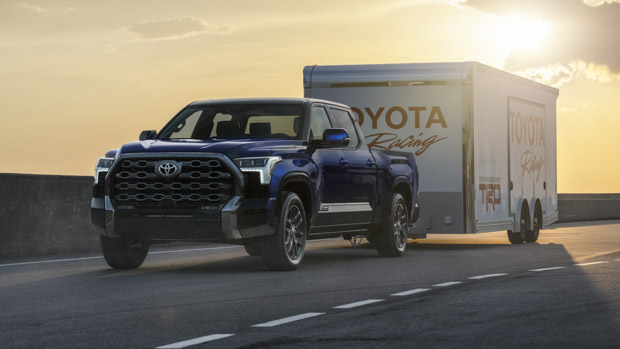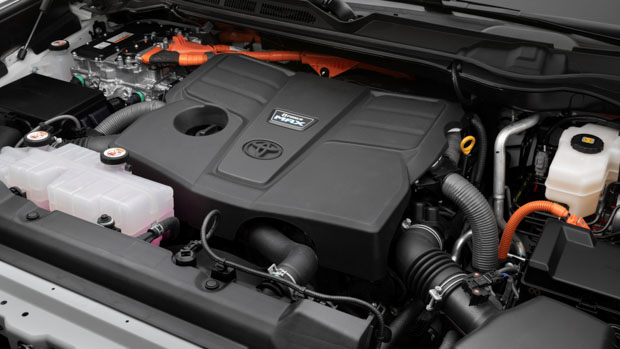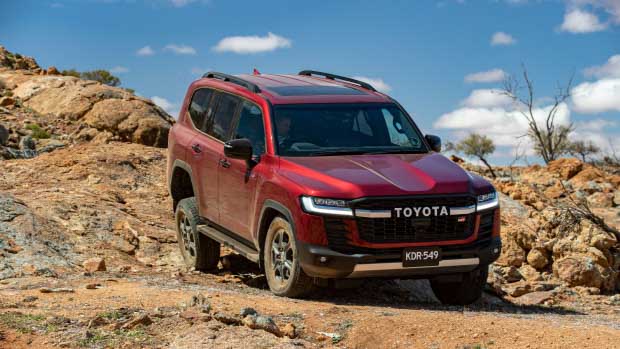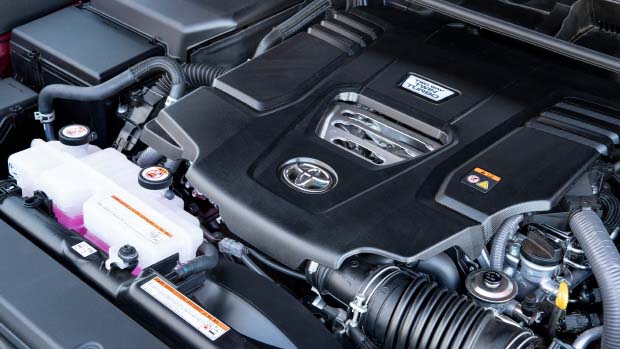-
Car Reviews
- All reviews
- Midsize SUVs
- Small cars
- Utes
- Small SUVs
- Large SUVs
- Large cars
- Sports SUVs
- Sports cars
- Vans
Latest reviews
- Car News
-
Car Comparisons
Latest comparisons
- Chasing Deals
It seems a manner of when, not if, Toyota will confirm a new hybrid drivetrain for the Land Cruiser 300 Series, but the outcome could be more than just a modest fuel saving for Australian buyers
When Toyota Motor North America (TMNA) unveiled the third-generation Tundra late last year, it not only lifted the lid on an all-new, high-tech, full-size pick-up for a new decade, it also debuted a cutting-edge commercial-vehicle hybrid drivetrain called the ‘iForce Max’.
At the time, TMNA promised considerable fuel economy benefits from the Tundra Hybrid, and today we’ve learnt that the iForce Max delivers on that promise – all of which could spell good news for the Land Cruiser 300 Series in Australia.
The 3445cc twin-turbo petrol-hybrid V6 found in the Tundra has been officially rated by the EPA in the US as consuming 11.2L/100km in combined conditions for the 4WD model – an impressive improvement over the outgoing Tundra, which drank 16.8L/100km via its 5.7-litre petrol V8.
Given that the Tundra, its Sequoia SUV derivative and the Land Cruiser 300 Series all share Toyota’s new-generation GA-F platform – and Australia’s seemingly bottomless appetite for hybrid-powered Toyotas – it seems only a matter of time before the iForce Max drivetrain makes its way under the bonnet of the Land Cruiser
The Australian-market Land Cruiser 300 Series is powered exclusively by a 3.3-litre twin-turbo-diesel V6 engine with a combined fuel consumption figure of 8.9L/100km, according to Australia’s ADR81/02 testing standard.
In order to compare this number against the comparatively more strict EPA standard used in the US, we noted the difference across three Toyota-powered hybrids – the Corolla, RAV4 and Lexus LS – and found, on average, the Australian testing protocols produced a 22.3 percent lower combined fuel-economy figure.
With this in mind, adapting the Tundra Hybrid’s combined fuel-efficiency number to ADR standards results in a fuel-economy figure of 8.7L/100km.
Given that the Tundra TRD Pro weighs around 100kg more than its Land Cruiser equivalent, the GR Sport (2728kg versus 2630kg), it’s not hard to imagine that with the twin-turbo petrol hybrid in its engine bay, a Land Cruiser Hybrid would better the Tundra’s 8.7L/100km number, not to mention the diesel’s 8.9L/100km combined figure.
Additionally, independent testing by Chasing Cars has found that Toyota’s hybrid vehicles have regularly been able to match their stated ADR consumption, whereas the diesel-powered Land Cruiser 300 fell short of its 8.9L/100km figure with our test consumption averaging 10.0L/100km.
Hybrids also tend to be most efficient around town (where many owners use their vehicles most of the time), and this could potentially widen the fuel-consumption gap between a petrol-hybrid Land Cruiser and the existing diesel version.
The 3.3-litre twin-turbo-diesel V6 in the Land Cruiser 300 Series is no slouch with 227kW of power and 700Nm of torque. But the iForce Max drivetrain takes grunt to another level.
With combined outputs of 326kW and 790Nm, the 3.4-litre hybrid easily surpasses the 3.3-litre diesel’s performance, bolstered by the instant torque gained from the 36kW electric motor.
Tied to the same 10-speed automatic transmission, this would make the twin-turbo petrol-electric drivetrain the incidental performance choice for Land Cruiser 300 buyers, supported by diesel-beating efficiency and tailpipe emissions.
Toyota Australia has remained silent on the chances of a hybrid engine for the Land Cruiser 300 Series, and there can’t be a great sense of urgency when supply has no chance of matching the overwhelming demand that already exists for Land Cruiser in Australia.
And even if the Land Cruiser 300 does score the iForce Max powertrain, Australia’s tardiness in adopting best-practice global emissions standards will likely put us further down the pecking order to receive the hybrid model. The current 3.3-litre twin-turbo-diesel V6 only meets Euro 5 emissions regulations, which date from 2009!
But the proof will be in the numbers. Fuel prices are increasing and the appetite for lower-emission hybrid vehicles is skyrocketing in Australia. Given that Toyota is already at the forefront of this technology, it’s bound to meet this demand.
Latest news
About Chasing cars
Chasing Cars reviews are 100% independent.
Because we are powered by Budget Direct Insurance, we don’t receive advertising or sales revenue from car manufacturers.
We’re truly independent – giving you Australia’s best car reviews.




